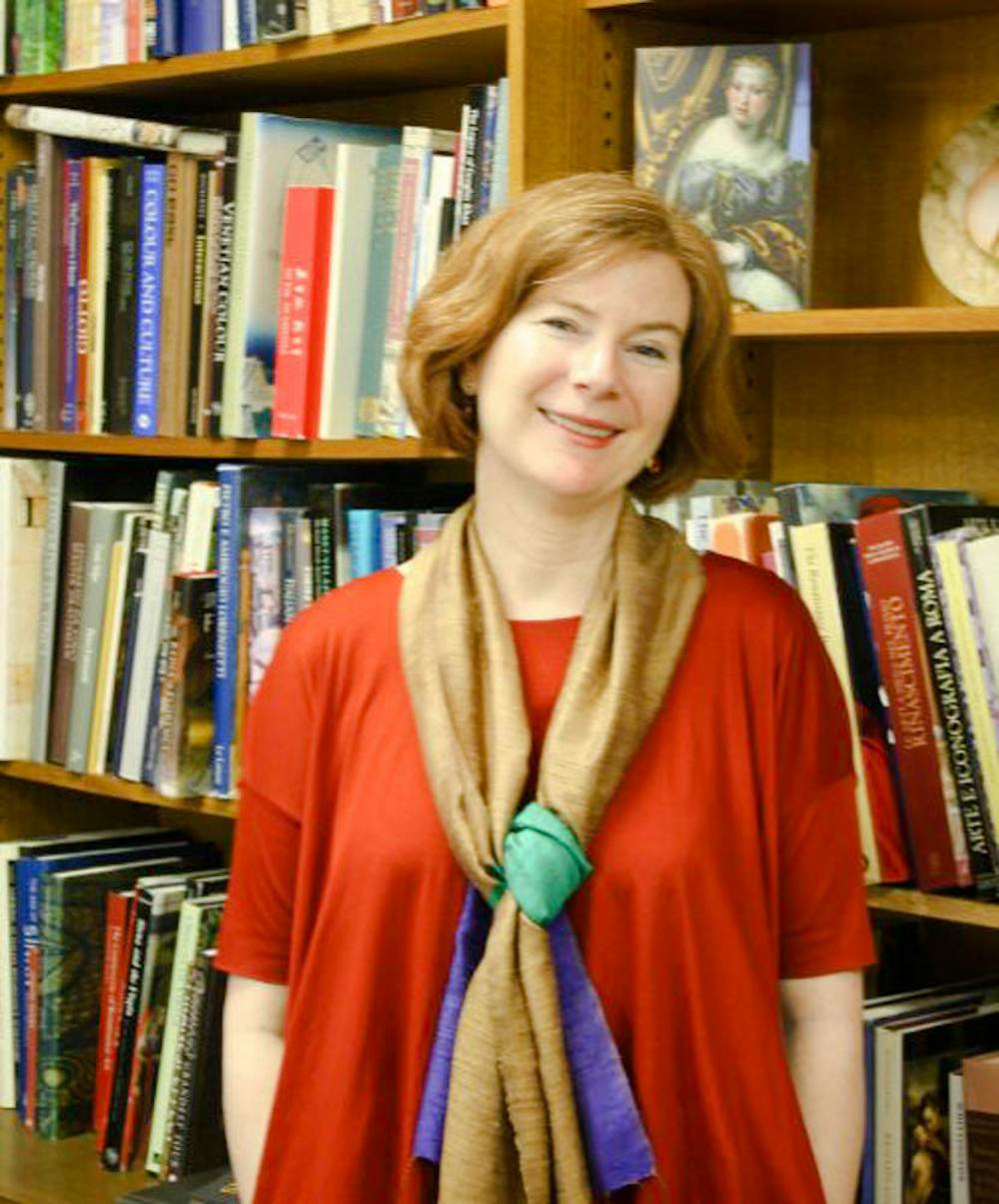On Feb. 20, Anne Dunlop, Herald Chair of Fine Arts at the University of Melbourne, started her lecture with a zoomed-in shot of the “Annunciation with St. Margaret and St. Ansanus,” a wooden altarpiece adorned with gold that depicts Archangel Gabriel kneeling in front of the Virgin Mary with an olive branch in hand. The exemplary piece of Gothic art opened Dunlop’s lecture, titled “Shimmer and Surfeit: Gold from Gothic Italy to Cattelan’s America.”
Dunlop started with an overview of gold as a symbol of status in modern society and discussed people’s obsession with the metal, namely citing how “America” — an 18-karat solid gold toilet sculptured by Maurizio Cattelan — was stolen in September 2019. She then compared gold’s connotation of luxury in modern art to its meaning of purity and divinity in Gothic Italy. Contrary to an anachronistic reading of gold as a sign of decadence in Gothic art, Dunlop argued that Gothic and Renaissance artists viewed it as a perfect, heavenly material because of its strong, malleable and stable properties.
An art historian specialized in the Early Modern period, Dunlop’s current research investigates the historical connections between Italian and Mongol-Eurasian art. Her lecture on gold is part of her “larger project on pigments and trade, and artistic shifts in Italy and Europe as relations change with the rise and fall of empires,” she told The Herald.
She was curious to find if there were any “moments of historical resonance” in the modern uses of the precious metal after she noticed how ubiquitous it was in Gothic art.
The research “was not hard initially,” she said, adding that “what was harder was to think about how to bring those things into dialogue.”
Dunlop’s research has also prompted her to think of “the longer costs” of gold mining that made these Gothic pieces possible, and how gold mining continues today as an environmentally damaging industry.
Audience member Sabrina Chwalek ’23 was surprised by the complexity of gold in Dunlop’s presentation. “I didn’t expect something so simple to have had such a vast evolution of meaning,” she said. “It was really interesting to see the parallels between the modern and contemporary uses of gold.”
Dunlop’s talk is the fourth in the History of Art and Architecture department’s “On Speculation” series, an initiative to help students realize what art historians do, said Evelyn Lincoln, department chair of HIAA. The series invites “six scholars who imagine visionary new approaches to the study of the past and writing about historical and contemporary art objects and architectures,” according to a department press release. Art historians Chika Okeke-Agulu and Wei-Cheng Lin will come to campus in March and April, respectively, to close the year-long lecture series.
Lincoln said that “people from all over” different departments have been coming to the lectures. “Each of these talks (taps) into different constituencies,” she added, drawing in “different constellations of people.”
“Speculation involves all kinds of ways of looking, valuing, thinking,” Lincoln said. “We brought together people doing all these different things … (people who) are going outside of their own comfort zones and outside of the places we were trained to think about.”





